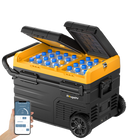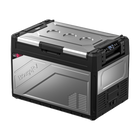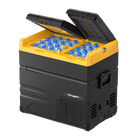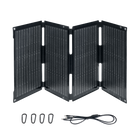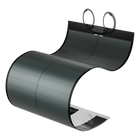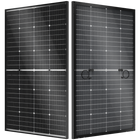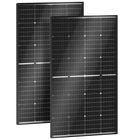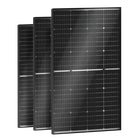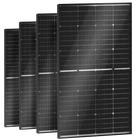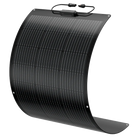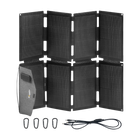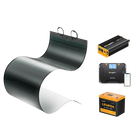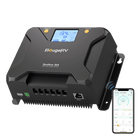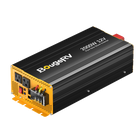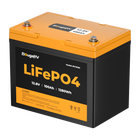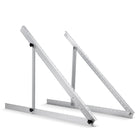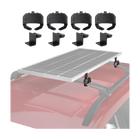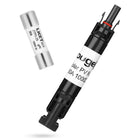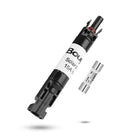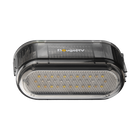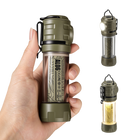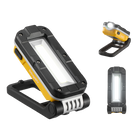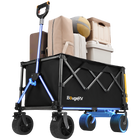How Many Solar Panels Do I Need For 1000 kWh Per Month?


Are you wondering how many solar panels are needed to generate 1000 kWh per Month? You're in the right place. As a solar energy company with years of experience, we are here to provide you with a clear and precise answer. Suppose you aim to produce 1000 kilowatt-hours (kWh) of energy per month using solar panels. In that case, you'll typically require around 18 to 25 solar panels, depending on factors like panel efficiency, local sunlight conditions, and your energy consumption patterns.
However, this answer only scratches the surface. In the subsequent sections below, we will explore the factors influencing this estimation, such as panel efficiency, geographical location, weather patterns, and your household's energy consumption habits. Let's break down the calculations right away.
Key Factors That Affect Solar Panel Output Efficiency

Generating 1000 kWh of electricity per Month through solar panels, understanding the intricacies that influence solar panel output efficiency becomes paramount.
1. Temperature:
Temperature might seem unrelated to solar panels, but it significantly affects their efficiency. Solar panels work optimally when exposed to sunlight, but excess heat can actually hinder their performance. Panels can experience reduced efficiency as temperatures rise, leading to lower energy production. This is known as the "temperature coefficient."
However, it's not all doom and gloom. Modern panels are designed to manage temperature fluctuations better, minimizing efficiency losses. Additionally, the angle at which panels are mounted and proper ventilation can help dissipate heat, maintaining optimal performance even during scorching days.
2. Wiring and Inverters:
Wiring and inverters are the unsung heroes of your solar setup. Efficient wiring ensures minimal energy loss as the generated power travels from the panels to your appliances. Conversely, inverters are responsible for converting the direct current (DC) generated by panels into alternating current (AC) used in your home. The quality and condition of both wiring and inverters directly impact how effectively your solar-generated power is harnessed.
Regular maintenance and checks on these components are essential to ensure they operate at their peak. Upgrading to newer, more efficient inverters can also boost your overall energy output and maximize the benefits of your solar investment.
3. Dirty Panels:
It might sound counterintuitive, but even a little dust and dirt can significantly impact solar panel efficiency. Dust particles, bird droppings, and other debris create a barrier between the sunlight and the panels, reducing the share of light that can be converted into electricity.
How Many Solar Panels Do I Need For 1000 kWh Of Electricity Per Month?
Now that we've established that around 18 to 25 solar panels are typically needed to generate 1000 kilowatt-hours (kWh) of electricity per month let's delve deeper into the calculation formula based on watts. At the same time, the initial number gives you a general idea.
Monthly Peak Sun Hours
The amount of sunlight your region receives greatly influences the energy your solar panels can generate. This is measured in "peak sun hours," which represents the number of hours per day when sunlight is strong enough for efficient energy production. Different regions have varying peak sun hour averages throughout the year.
For example, let's compare two states in the USA – California and Minnesota. With its sun-soaked climate, California can have around 5-6 peak sun hours per day on average. Meanwhile, with its colder climate, Minnesota might see around 3-4 peak sun hours per day on average.
To translate this to energy, consider a 400-watt solar panel. Over 30 days, with 6 peak sun hours per day, that panel could potentially generate:
400W × 6 hours × 30 days = 72,000 watt-hours (or 72 kWh)
In Minnesota, under similar conditions, the same panel might generate:
400W × 4 hours × 30 days = 48,000 watt-hours (or 48 kWh)
Monthly Electric Usage: The Starting Point
Before determining the number of solar panels required, it's essential to know your monthly electric usage. For our example today, let's assume you need at least 1000 kWh of energy per month to power your home.
Power Rating of Solar Panels: Calculating the Panels
Now, let's put the pieces together. If you're using 400-watt solar panels or BougeRV's 200-watt panels, you'll need to calculate the total number of panels required to meet your 1000 kWh monthly goal.
First: Using the California scenario, where each panel generates around 72 kWh per Month, you would need
1000 kWh / 72 kWh per panel = approximately 14
Since you can't have a fraction of a panel, you'd likely round up to 14 400W solar panels to meet your energy needs.
So, In the same California using BougeRV 200W:
Let's assume you are using a BougeRV 200W Mono solar panel


So, the estimated number of solar panels required to produce a monthly output of 1000 kilowatt-hours is approximately 28 panels. This calculation is derived from the straightforward method demonstrated in the preceding examples.
How Much Will A 1000 kWh Solar Panel System Save Me?
The question on many minds is: How much can a 1000 kWh solar system really save? Let's dive into the specifics and uncover the potential savings that await.
Understanding Your Electric Rate:
Before calculating your savings, we need to know the foundation – your current electricity rate. The cost of electricity varies significantly from country to country and even within regions. Knowing how much you pay per kilowatt-hour (kWh) is the first step to unveiling your solar savings.
Offsetting 100% of Consumption:
Imagine a scenario where your solar system offsets 100% of your electricity consumption. In this scenario, you would save the amount you would have spent on electricity monthly.
Let's consider an example from the USA, where the average cost of electricity is around $0.150 per kWh. With a 1000kWh solar installation that covers all your needs, you could potentially save:
1000 kWh * $0.150 = $150 every month
Quantifying Your Investment: The Solar Panels
Now, let's talk about your initial investment – the cost of your solar panels. Suppose you spent $13,000 on your solar system installation. This includes the panels, inverters, and installation costs.
To calculate your payback period and ongoing savings, let's break it down:
-
Monthly Savings: As we calculated earlier, your monthly savings could be $150.
-
Yearly Savings: Multiply your monthly savings by 12 months: $150 * 12 = $1800.
Payback Period: The Financial Milestone
The payback period is the time it takes for your cumulative savings to equal your initial investment. In this case:
$13,000 / $1800 = approximately 7.22 years
This means that after around 7.22 years, your solar system's savings will surpass the initial investment cost, and from that point onward, you'll be essentially generating free electricity.
Beyond Payback: Years of Savings
After the payback period, your savings continue to accumulate. Over the course of 25 years (the average lifespan of solar panels), your savings would amount to
$1800 * 25 = $45,000
This number not only showcases the potential financial benefit of solar energy but also the substantial impact on your monthly or yearly budget and long-term financial goals.
Your Solar Savings
|
Time Period |
Monthly Savings |
Yearly Savings |
Cumulative Savings |
|---|---|---|---|
|
1 Year |
$150 |
$1800 |
$1800 |
|
5 Years |
$150 |
$1800 |
$9000 |
|
10 Years |
$150 |
$1800 |
$18000 |
|
20 Years |
$150 |
$1800 |
$36000 |
|
25 Years (Total) |
$150 |
$1800 |
$45000 |
The numbers tell a compelling story – investing in a 1000kWh solar system not only aligns with sustainable values but also translates into substantial financial savings over the years.
Conclusion
So, as you have gained a deep understanding of achieving this remarkable goal of generating 1000 kWh per Month, your quest for sustainable energy solutions has led you to a place of knowledge and empowerment, but the journey doesn't end here.
When it comes to translating this newfound knowledge into action, there's one name that stands out: BougeRV. Our commitment to innovation and excellence is exemplified in their cutting-edge solar panels. These revolutionary panels offer unrivaled flexibility for RV and house.
By choosing BougeRV, you're not just investing in solar panels – you're investing in a future of sustainable energy independence. Our expertise and your newfound understanding of panel efficiency and consumption patterns make for a compelling collaboration that can lead to significant financial savings and a reduced carbon footprint.
FAQ
How long do solar panels last?
Solar panels commonly have a lifespan of around 25 to 30 years. However, their efficiency may gradually decline over time. Proper upkeep and maintenance can help extend their longevity and performance.
Is 2000 kWh per Month a lot?
An average household in the United States consumes approximately 877 kWh per Month. Therefore, 2000 kWh per Month is considered a relatively high level of energy consumption, indicating a larger household size or energy-intensive activities.


















